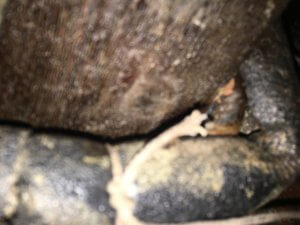In this episode of the A-Z of Damp from Atlantis Damp & Timber Proofing Specialists Ltd, S is for…… Sub-floor ventilation and condensation.
Sub-floor ventilation and condensation is one of those things you may see referred to in a Home Buyer surveyors report. It is an issue that generally remains unseen until a problem with the floor arises.

What is a sub-floor void?
The area under a suspended floor, called a sub-floor void is the space beneath a ground floor, suspended timber floor. The actual size of this void – or space – can vary significantly from virtually nothing, where floor joists are in contact the substrate beneath, to something which you could crawl under. The norm for this sort of space is somewhere in-between and is often found to be around 300-400mm deep. That’s from the undersides of the floor boards to the substrate beneath.
Why do you need to ventilate your sub-floor void?
Some years ago the building regs effectively doubled the amount of sub-floor ventilation you require. The reason for air bricks always being needed on as many sides of your property as possible is that air doesn’t blow in through the air bricks. What happens is that on the downwind side of your house there is a low-pressure zone, into which air is sucked from under the floor via the air bricks on that side. Your sub-floor void is then replenished with air pulled in from all other available directions.
Therefore, to allow for variations in wind direction, and to ensure good circulation into all corners, air bricks should ideally exist on as many sides as possible. The more sub-floor ventilation, the better.
It is also important to remember that in the era when most houses with suspended wooden floors were built, there were more directions of ventilation to the sub-floor void. Before T&G (tongue and groove) floor boarding, you had draughty gaps between boards. Before double glazing became the norm, your window frames were draughty. Prior to central heating catching on, there were open fireplaces creating up-draughts and pulling air through the house. And remember, lots of you didn’t fully carpet ground floor rooms. The loss of so much incidental ventilation meant we had to increase the air bricks to compensate. If we don’t, decay of the floor timbers would quicken.
Why aren’t the vents I’ve already got sufficient?
The holes in a conventional terracotta air bricks that typically provide your sub floor ventilation are inefficient. They are very easily clogged by insects and debris, and we bet that not many of you think of clearing them out. We often recommend that these traditional terracotta vents are replaced with ones that offer a much higher airflow (eg louvred ones) to improve the sub floor ventilation. This is important to ensure your timber joists, wall-plates and floor boards are kept suitably dry (below 16-18% mc) they are generally not at risk of timber decay.
What are the signs that my sub floor ventilation is not sufficient?
Often it is only when a surveyor identifies abnormal moisture levels in the upper side of your timber floor that you know you’ve got a problem. If you’re feeling movement in your floor boards, it’s likely that the decay has already started. It may be that joists are imbedded in a damp wall. It may be that the condensation levels in the sub floor void have allowed the joists to start to rot.
What are the contributing factors to be aware of that lead to rotten floor boards?
• flower beds being built up against external walls,
• paths around the house being re-laid over old paths etc.
• blocked sub floor ventilation
• leaking plumbing pipes within the sub-floor void• high water table
All these effects the sub-floor ventilation and which can lead to excess water and humidity within the sub-floor void.
What should I do next?
That’s the easy one! If you think you may have problem with your sub-floor ventilation, simply at Atlantis Damp Proofing & Timber Specialists Ltd for our expert opinion to ensure accurate diagnosis and solutions to your property problem.
The post S is for Sub-floor ventilation and condensation appeared first on Atlantis Damp.
source https://www.atlantisdamp.co.uk/blog/s-sub-floor-ventilation-condensation/

No comments:
Post a Comment